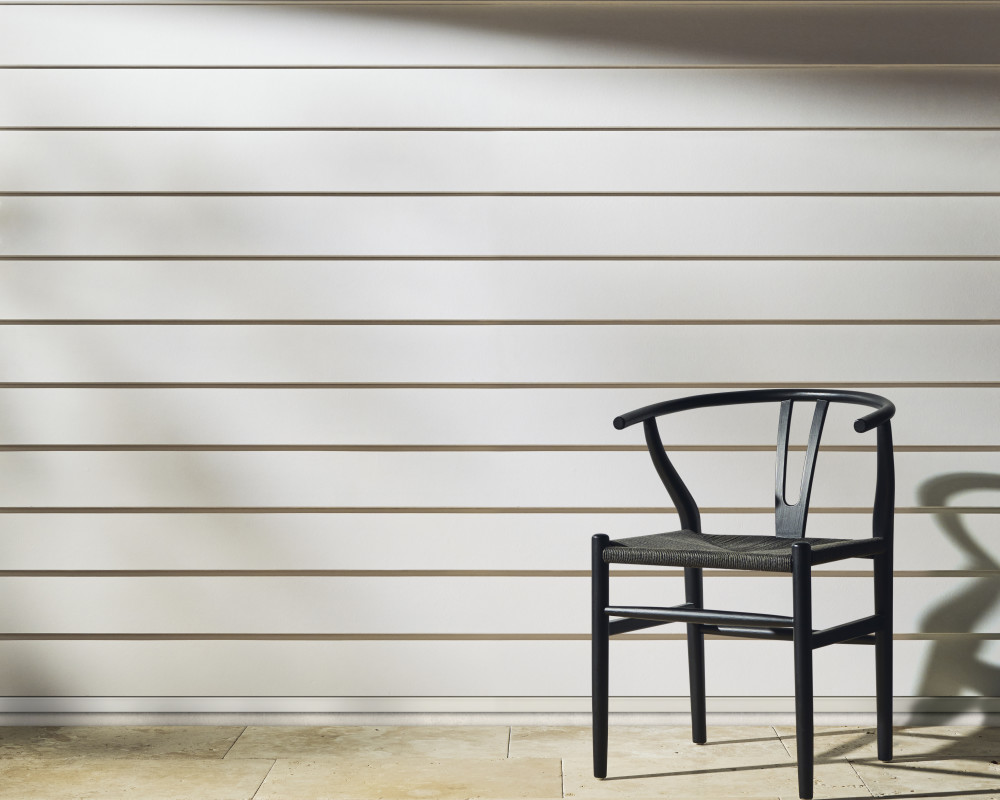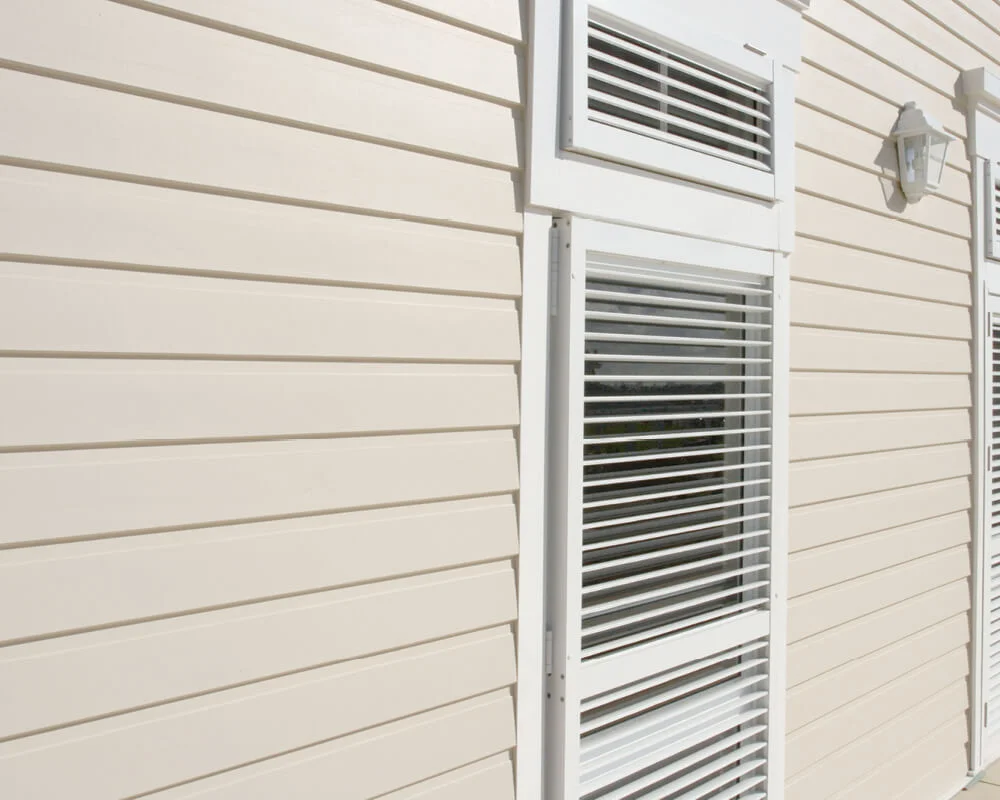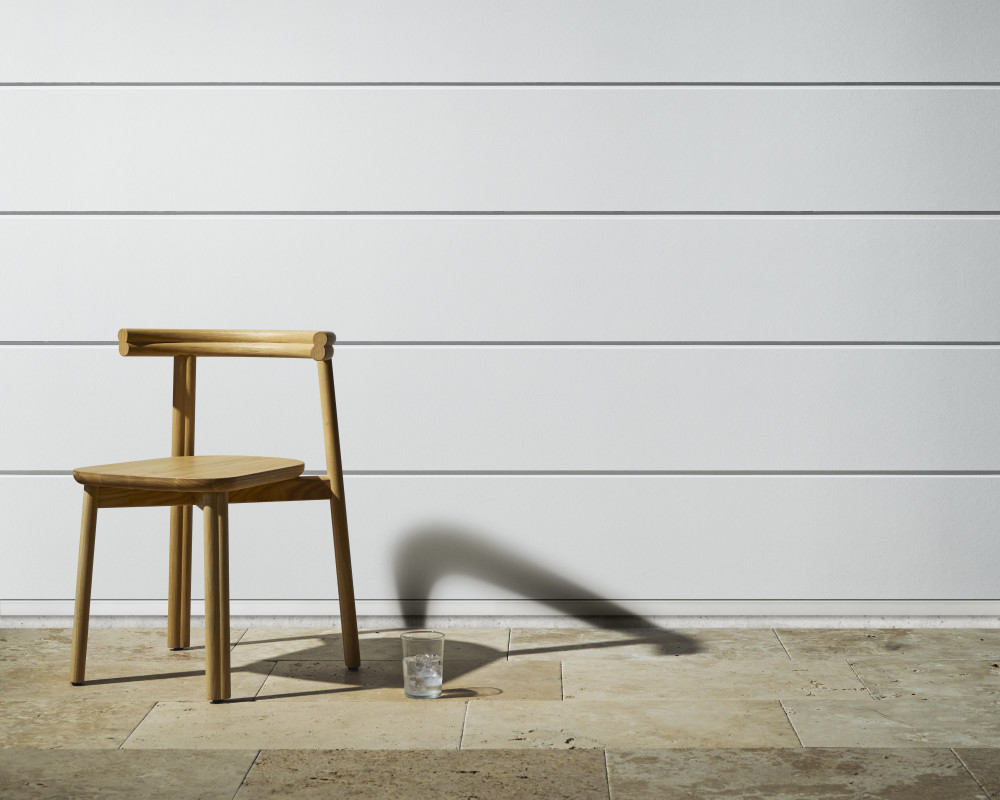weatherboards
Create classic or contemporary looks
Weatherboards have been used in Australian homes since the 1850s and are a key factor of Victorian and Queenslander home styles. Today they’re popular in modern coastal and Australian Hamptons style homes. Weatherboards help protect a building/structure from the harsh and unpredictable Australian weather, and natural elements such as sea spray.
Attached horizontally to the frame / house with the board above overlapping the board below creating an attractive shadow line. Builders generally prefer fibre cement weatherboards over natural timber weatherboards because they don’t bend or warp prior to installation, and also cut cleanly and require less frequent painting. James Hardie fibre cement weatherboards are also resistant to fire, rot, termites and damage from moisture. They’re suitable for use in bushfire zone construction and with fire and acoustic wall systems. James Hardie weatherboards are available in a range of thicknesses, profiles and textures. Linea weatherboards are 16mm thick and smooth for deep sharp shadow lines. PrimeLine weatherboards are 9mm thick in a narrow style with machined profiles for different shadow lines. HardiePlank weatherboards are a wide style with smooth, wood grain and rough sawn textures.
Weatherboards have been used in Australian homes since the 1850s and are a key factor of Victorian and Queenslander home styles. Today they’re popular in modern coastal and Australian Hamptons style homes. Weatherboards help protect a building/structure from the harsh and unpredictable Australian weather, and natural elements such as sea spray.
Attached horizontally to the frame / house with the board above overlapping the board below creating an attractive shadow line. Builders generally prefer fibre cement weatherboards over natural timber weatherboards because they don’t bend or warp prior to installation, and also cut cleanly and require less frequent painting. James Hardie fibre cement weatherboards are also resistant to fire, rot, termites and damage from moisture. They’re suitable for use in bushfire zone construction and with fire and acoustic wall systems. James Hardie weatherboards are available in a range of thicknesses, profiles and textures. Linea weatherboards are 16mm thick and smooth for deep sharp shadow lines. PrimeLine weatherboards are 9mm thick in a narrow style with machined profiles for different shadow lines. HardiePlank weatherboards are a wide style with smooth, wood grain and rough sawn textures.
4 Products in weatherboards
Weatherboard homes are popular around the world, especially where there’s an abundance of natural timber. In Australia they are commonly found in country and coastal areas and most commonly in Queensland, where weatherboard is an iconic feature of a traditional Queenslander-style home. New and renovated weatherboard homes typically feature balconies and verandahs which work particularly well in warm climates where a flow-through breeze and outdoor living is encouraged. Weatherboard homes are also often associated with holiday homes so it’s common for them to have a laid-back beachy feel.
James Hardie’s fibre cement wall cladding is engineered to avoid longevity issues such as shrinking, swelling warping and rotting, so they retain their looks for longer. They’re stable and have no knots and are consistent in shape and size. Fibre cement weatherboards are a highly durable composite building material where cement is reinforced using wood cellulose, and are often used in construction in bushfire zone areas. The James Hardie Linea and PrimeLine weatherboard ranges are rated to Bushfire Attack Level (BAL) 40 while the HardiePlank weatherboards are rated to BAL29. All can be upgraded to BALFZ when used as part of a HardieSmart Boundary Wall system.
Choosing weatherboards can be tricky with homeowners often looking to match the weatherboards from their Victorian, Federation, Pre-War or Post-War home in order to do an upper floor or ground floor extension. James Hardie PrimeLine weatherboards have a range of beaded and rebated weatherboard profiles which may match early timber weatherboard profiles, while HardiePlank weatherboards have been around for decades and the boards made today match the original board designs. In new homes, where an Australian Hamptons look or simple modern look is chosen, Linea weatherboards are the best choice. The thickness is reminiscent of old hardwood weatherboards but they don’t have a wood grain texture and as a result work well in a contemporary context.
Also popular is the use of weatherboards on brick homes. It’s now common to see a single storey brick home with a second storey extension using weatherboards, as it can be prohibitively expensive to build a second level addition in heavy materials such as bricks. If the contrast between bricks and weatherboards doesn’t suit the home, then the brickwork can be rendered in the same colour as the weatherboard to achieve a similar look. On some walls it makes sense to batten-out over the brick in order to clad the wall with weatherboards.
Weatherboard homes are popular around the world, especially where there’s an abundance of natural timber. In Australia they are commonly found in country and coastal areas and most commonly in Queensland, where weatherboard is an iconic feature of a traditional Queenslander-style home. New and renovated weatherboard homes typically feature balconies and verandahs which work particularly well in warm climates where a flow-through breeze and outdoor living is encouraged. Weatherboard homes are also often associated with holiday homes so it’s common for them to have a laid-back beachy feel.
James Hardie’s fibre cement wall cladding is engineered to avoid longevity issues such as shrinking, swelling warping and rotting, so they retain their looks for longer. They’re stable and have no knots and are consistent in shape and size. Fibre cement weatherboards are a highly durable composite building material where cement is reinforced using wood cellulose, and are often used in construction in bushfire zone areas. The James Hardie Linea and PrimeLine weatherboard ranges are rated to Bushfire Attack Level (BAL) 40 while the HardiePlank weatherboards are rated to BAL29. All can be upgraded to BALFZ when used as part of a HardieSmart Boundary Wall system.
Choosing weatherboards can be tricky with homeowners often looking to match the weatherboards from their Victorian, Federation, Pre-War or Post-War home in order to do an upper floor or ground floor extension. James Hardie PrimeLine weatherboards have a range of beaded and rebated weatherboard profiles which may match early timber weatherboard profiles, while HardiePlank weatherboards have been around for decades and the boards made today match the original board designs. In new homes, where an Australian Hamptons look or simple modern look is chosen, Linea weatherboards are the best choice. The thickness is reminiscent of old hardwood weatherboards but they don’t have a wood grain texture and as a result work well in a contemporary context.
Also popular is the use of weatherboards on brick homes. It’s now common to see a single storey brick home with a second storey extension using weatherboards, as it can be prohibitively expensive to build a second level addition in heavy materials such as bricks. If the contrast between bricks and weatherboards doesn’t suit the home, then the brickwork can be rendered in the same colour as the weatherboard to achieve a similar look. On some walls it makes sense to batten-out over the brick in order to clad the wall with weatherboards.



